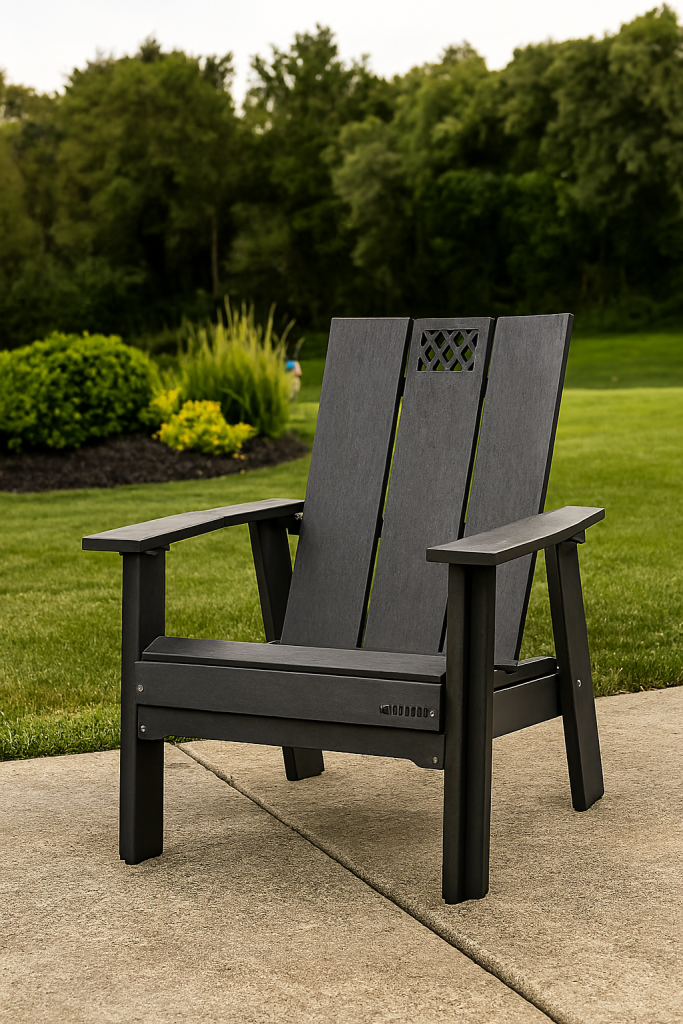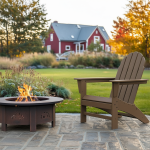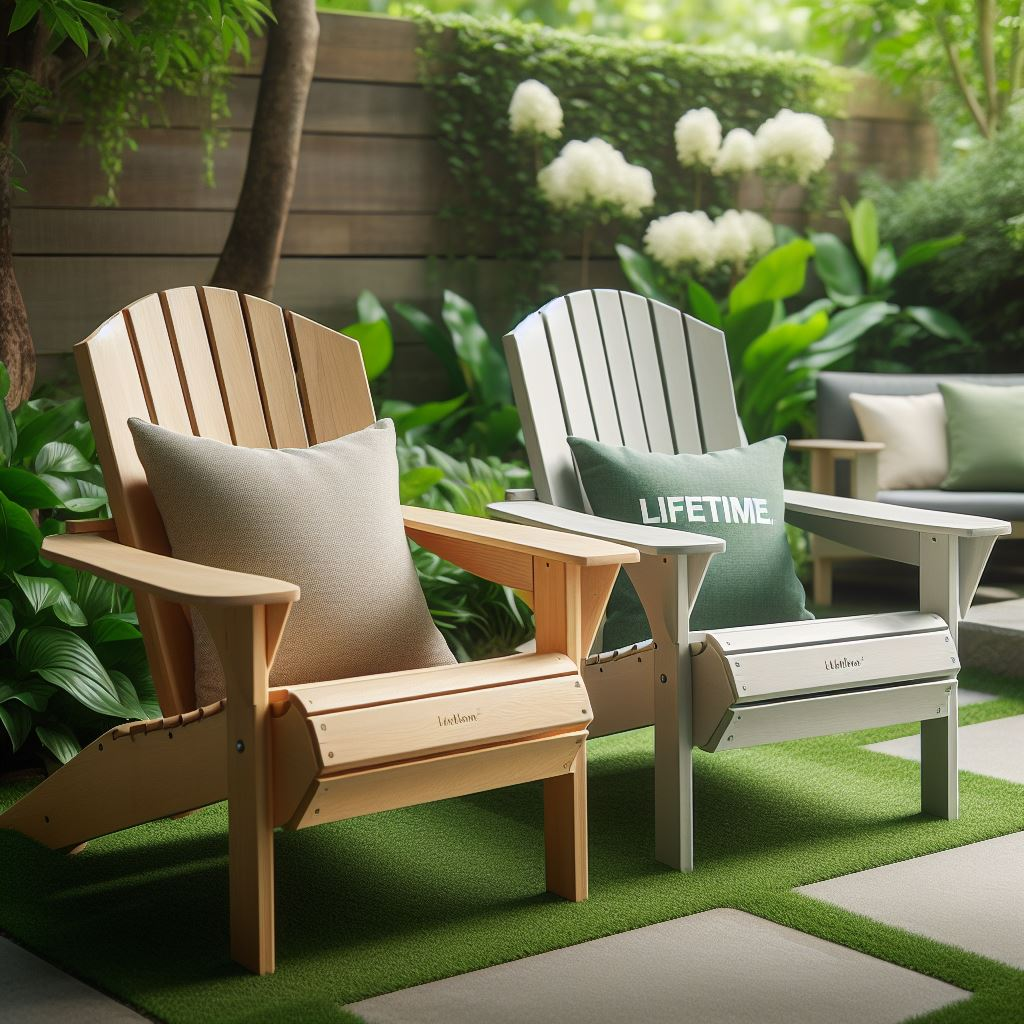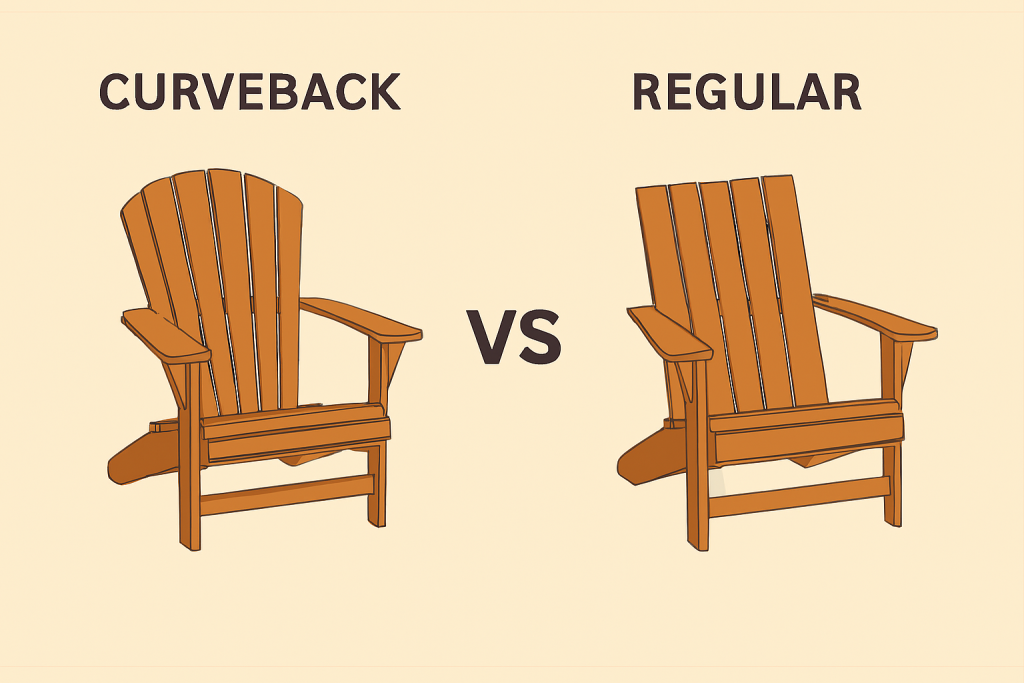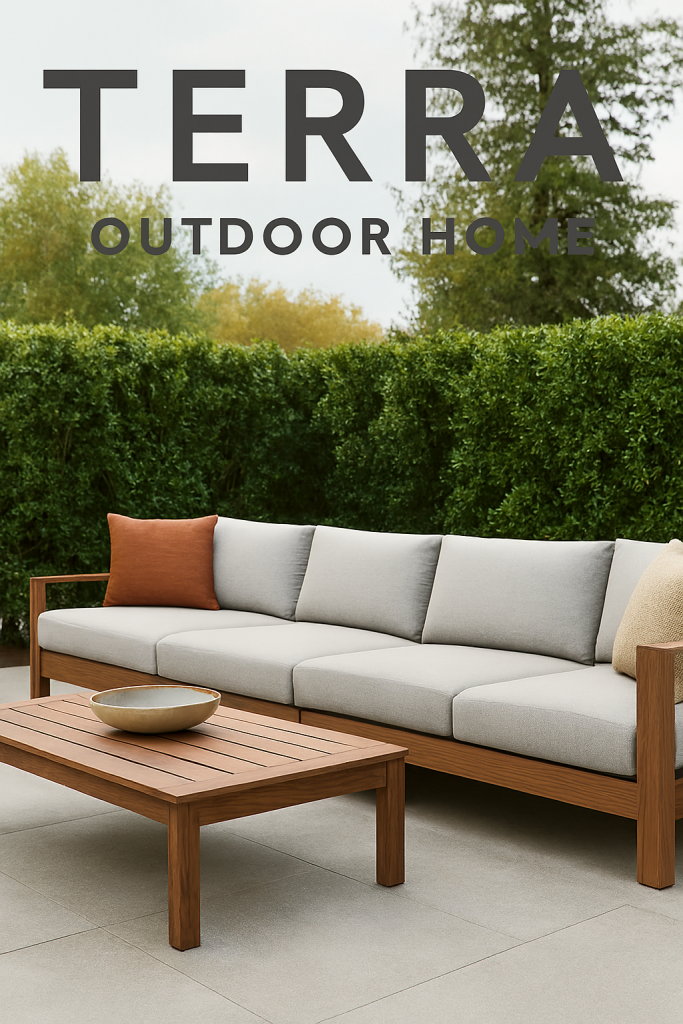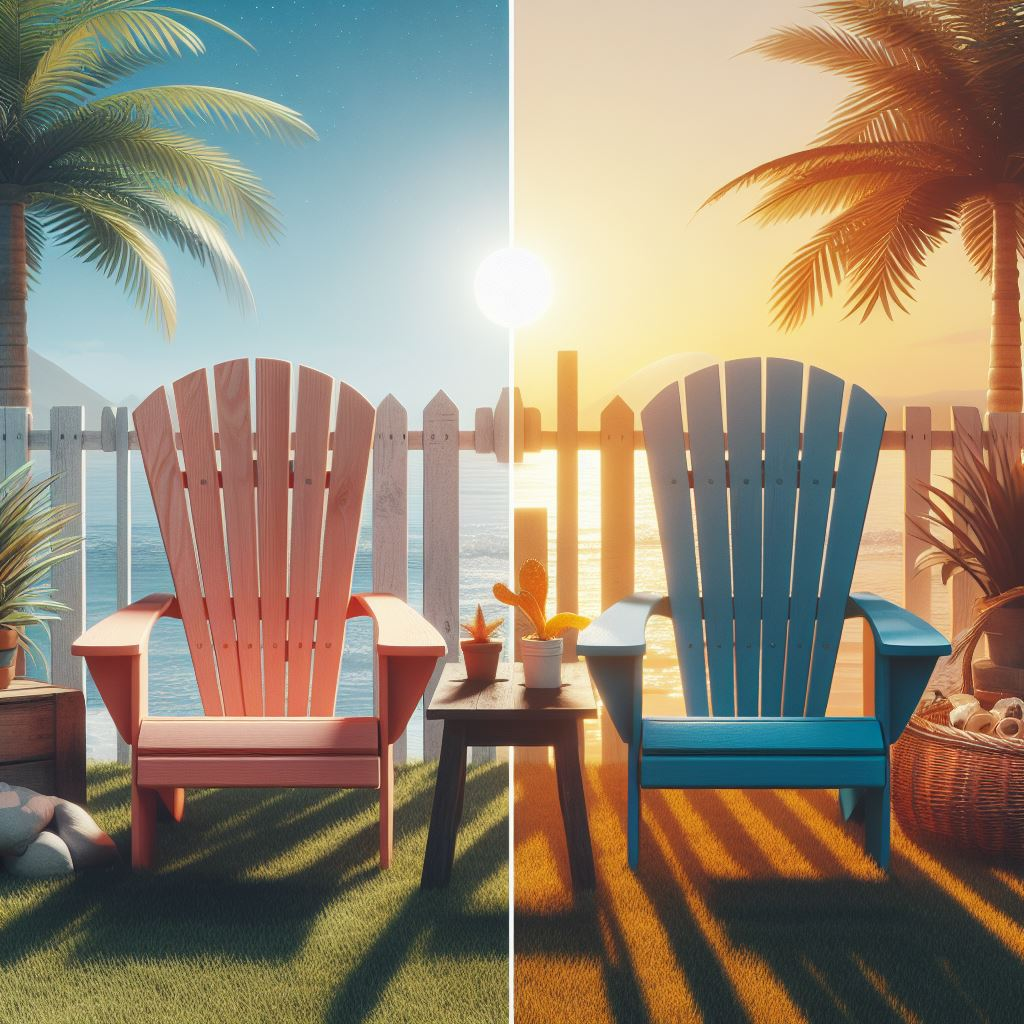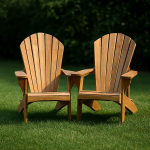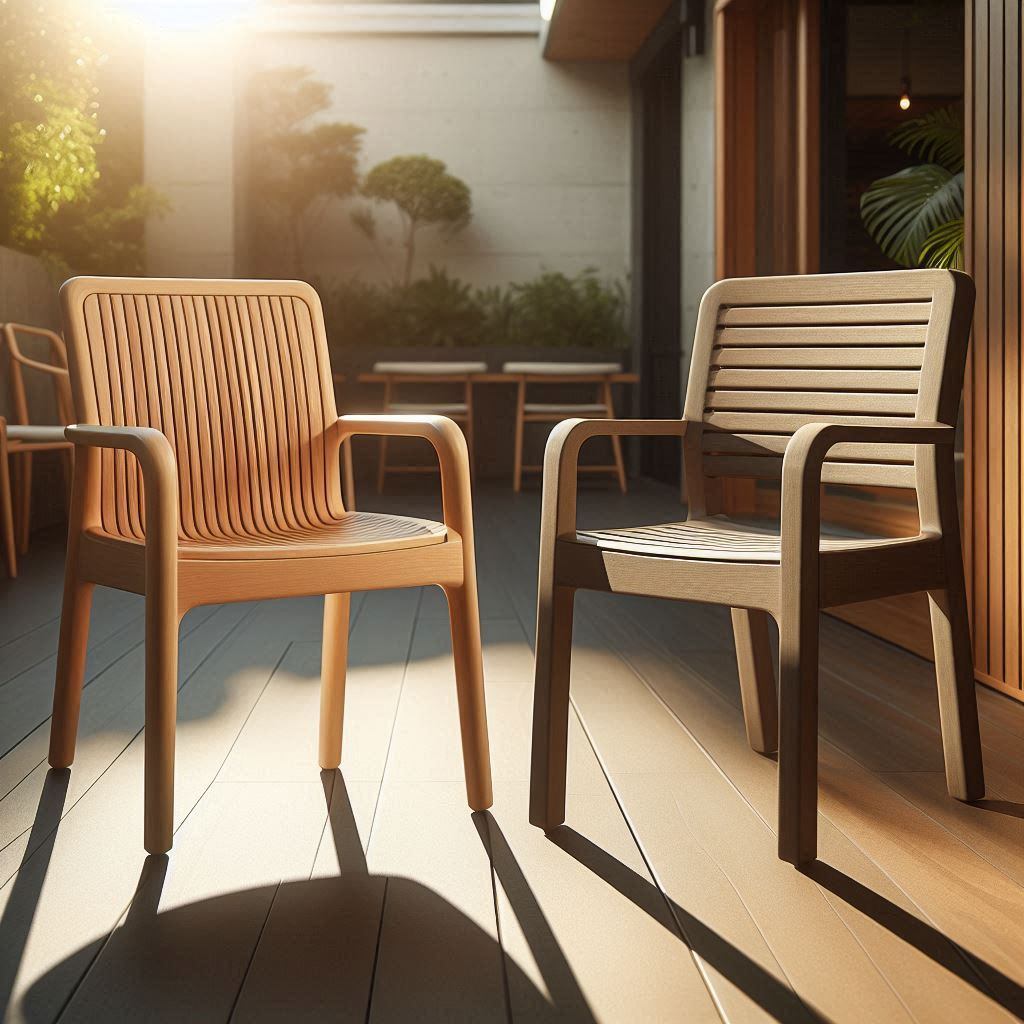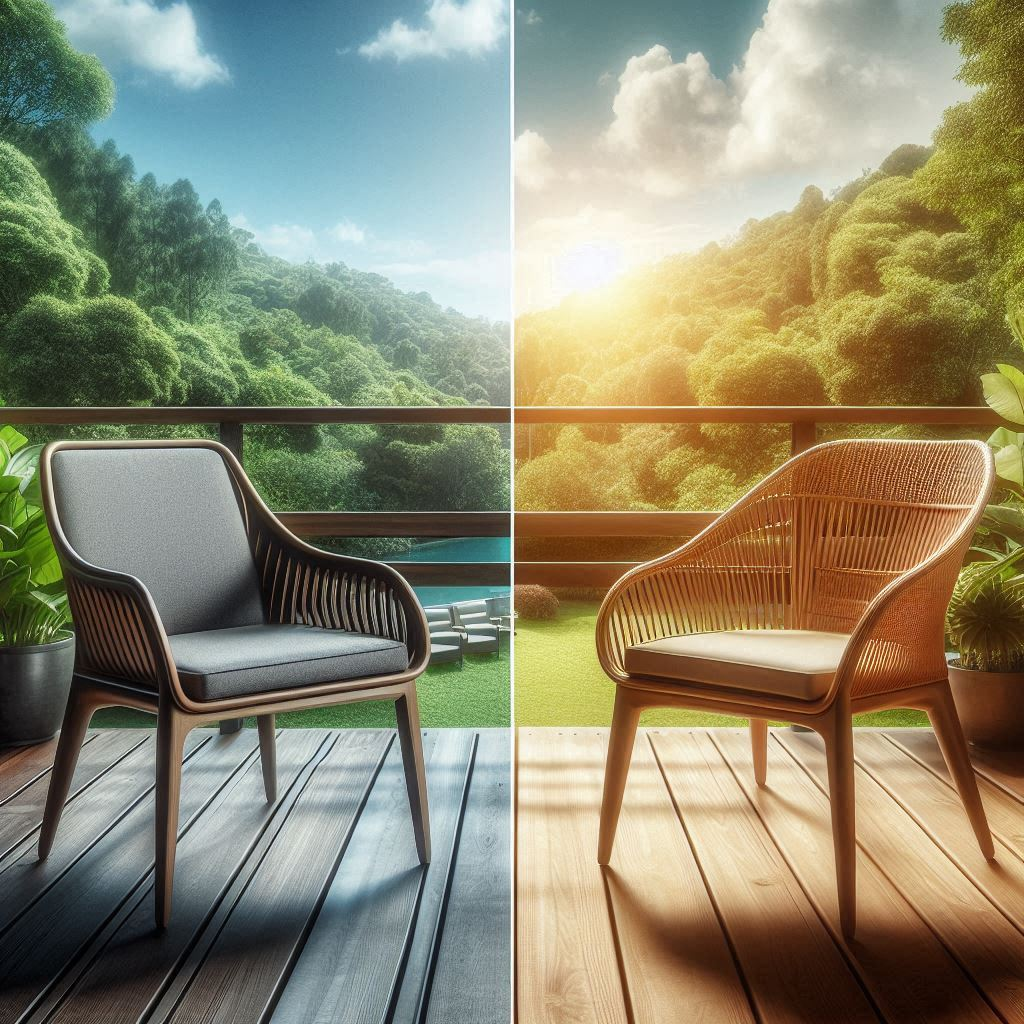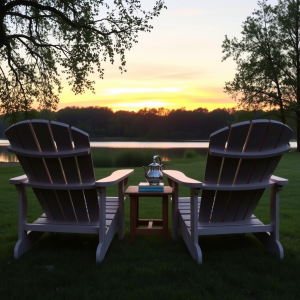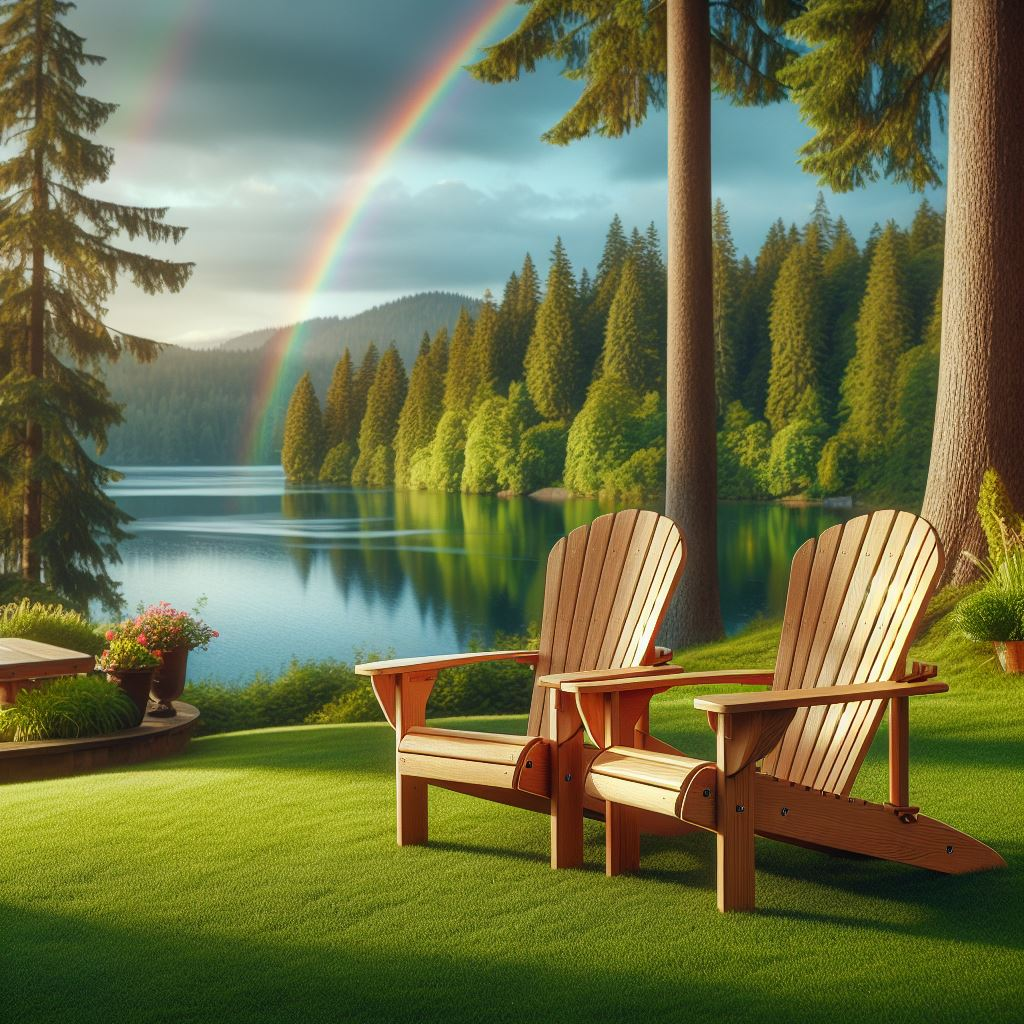I never thought I’d spend nearly $400 on an outdoor chair. But after my neighbor kept raving about his Breeo X Series chairs last spring, I ended up at his fire pit one evening, and honestly, I understood the hype within about fifteen minutes. The way I sat in that chair—upright, engaged, actually comfortable—made my old folding camping chairs feel like torture devices.
So I bought two. One in black, one in gray. That was in February 2024, and they’ve been sitting next to my fire pit through rain, snow, and brutal summer sun. This review covers everything I’ve learned about these chairs, from the initial setup to how they’ve held up through multiple seasons.
What Makes the Breeo X Series Chair Different
Most outdoor chairs fall into two camps: cheap folding chairs that collapse when someone over 180 pounds sits down, or those heavy Adirondack-style chairs that look nice but force you into a reclined position where you’re staring at the sky instead of talking to people.
The X Series sits somewhere else entirely. Breeo designed these specifically for fire pit use, which sounds like marketing speak until you actually use one. The seat height is 16 inches off the ground—higher than typical Adirondack chairs by about 3 inches. That elevation changes everything.
When you sit in a standard Adirondack chair around a fire, you’re either leaning way forward to stay engaged in conversation, or you’re slouched back staring at the stars. The X Series puts you at the right height to see across the fire pit, make eye contact with people, and stay in the warmth zone without constantly adjusting your position.
Build Quality and Materials: Breaking Down the Construction
Let me get specific about what you’re actually buying. Each chair weighs 37 pounds. That’s not a guess—I weighed mine on a bathroom scale when it arrived because I was curious if the weight justified the price.
The frame uses poly lumber, which is recycled HDPE plastic (high-density polyethylene). Before I bought these, I researched what poly lumber actually is because “plastic chair” sounded cheap. Turns out, this material is what they make marine-grade outdoor furniture from. It’s the same stuff used in composite decking that costs $8-12 per square foot.
Here’s why that matters: Real wood chairs require maintenance. You’re staining them every year, sanding down splinters, watching them crack in cold weather. Poly lumber doesn’t do any of that. It also doesn’t absorb water, which means no mold, no rot, and no waterlogging that adds 10 pounds to your chair.
The joints use 304 stainless steel accents. This isn’t decorative—the metal reinforces stress points where the arms meet the backrest. I checked these connection points after 8 months, and there’s zero play or wobble. The chair feels as solid as it did in February.
Weight Capacity: Real Numbers
Breeo rates these chairs at 400 pounds. I weigh 215 pounds. My brother-in-law weighs around 280. We’ve both sat in these chairs extensively, sometimes for 3-4 hours at a time during fire pit sessions. The chairs show no stress, no creaking, no flexing.
To put that 400-pound rating in perspective: typical plastic Adirondack chairs from big-box stores are rated for 250-300 pounds. Wooden Adirondack chairs typically max out around 300 pounds unless you’re getting into seriously expensive hardwood options.
I can’t verify the full 400 pounds (I don’t know anyone who weighs that much), but based on how these chairs handle heavy use with zero signs of stress, I believe the rating is legitimate, not inflated for marketing.
Assembly: What You’re Actually Dealing With
The chair arrives in four pieces: the seat, backrest, and two arms. You get a hex key tool and 8 screws. Assembly took me 12 minutes for the first chair, 8 minutes for the second.
Breeo provides a video that shows the process, but honestly, you probably don’t need it. The screw holes are pre-drilled and aligned properly. Each piece only fits one way. I’ve assembled probably 30 pieces of furniture in my life, and this ranks as one of the easiest.
One small detail that impressed me: the screw holes are countersunk, so the hardware sits flush with the surface. No protruding bolt heads that snag clothing or scratch up your hands when you’re moving the chair.
Comfort Analysis: The Geometry of Sitting
This is where things get interesting. The seat depth is 18 inches. The backrest angle is approximately 105 degrees from the seat plane. I measured this with a protractor app on my phone because I was trying to figure out why these chairs felt different from every other outdoor chair I’d used.
For comparison, most Adirondack chairs have backrests angled at 115-120 degrees. That extra 10-15 degrees of recline is what forces you to lean forward or slouch back awkwardly when you’re trying to have a conversation.
The seat itself has subtle contouring. It’s not flat—there’s a slight depression in the center and a gentle rise at the front edge that prevents that cutting-off-circulation feeling you get from flat-seated chairs.
I’ve sat in these chairs for extended periods—the longest session was probably 4.5 hours during a dinner party where we stayed outside around the fire pit. My back didn’t hurt. I didn’t feel like I needed to stand up and stretch every 30 minutes. That 105-degree angle keeps your spine in a neutral position that doesn’t strain your lower back.
The Elevated Seating Position: Why It Matters
At 16 inches high, these chairs put your eye level at roughly 48-50 inches when seated (depending on your torso length). Around a standard 24-inch diameter fire pit, this means you’re looking at other people’s faces, not their foreheads or the sky behind them.
This seems like a small thing until you’ve spent an evening in these chairs versus traditional low-slung camping chairs. The difference in social dynamics is real. Conversations flow better when everyone’s at the same eye level and you’re not craning your neck to make eye contact.
Weather Resistance: 8 Months of Real-World Testing
My chairs have been outside continuously since February 2024. They’ve experienced:
- 23 days of rain (I checked my weather app history)
- 14 days of snow
- Summer temperatures reaching 96°F
- Winter temperatures down to 12°F
- Direct sun exposure for 4-6 hours daily (south-facing patio)
Color stability: Both chairs look identical to how they looked in February. The black chair is actually easier to judge because black plastic typically fades to gray within one season when it’s not UV-stabilized. Mine is still black.
Breeo claims the poly lumber has built-in UV protection. Based on eight months of testing, this appears accurate. For comparison, a black plastic planter I bought at the same time has already started showing gray patches.
Water behavior: When it rains, water doesn’t pool on the seat. The surface has a very slight texture that helps water sheet off rather than collect in puddles. After a rainstorm, the chairs are usually dry enough to sit on within 30 minutes, compared to wooden chairs that can stay wet for hours.
Dirt and debris: The surface doesn’t attract dirt the way I expected. I’ve wiped the chairs down exactly twice in 8 months—once in May, once in August. Both times were purely cosmetic because I was having people over. The chairs would have been fine without cleaning.
No maintenance required: I haven’t applied any protective coating, sealant, or treatment. The chairs require exactly zero maintenance beyond occasionally wiping off pollen or leaves.
Temperature Performance: Hot and Cold Weather Use
In July, with full sun exposure, these chairs get warm but not burn-your-legs hot. I measured the surface temperature with an infrared thermometer out of curiosity: 118°F in direct sunlight when the air temperature was 92°F.
That sounds hot, but sitting on them was fine. The poly lumber doesn’t transfer heat to your skin the way metal would. Within about 90 seconds of sitting down, your body heat creates a boundary layer that insulates you from the chair’s surface temperature.
In winter, the chairs stay slightly warmer than the air temperature. At 28°F ambient temperature, the chair surface measured 34°F. They don’t get as cold as metal chairs, which can be painfully cold to touch in winter.
The chairs don’t become brittle in cold weather. I was concerned about this because cheap plastic furniture cracks when temperatures drop. The HDPE material Breeo uses remains flexible down to -40°F according to material specifications. I can’t verify that extreme, but at 12°F, the chairs showed no signs of brittleness.
Value Analysis: Breaking Down the $399 Price Tag
This is where most people hesitate. $399 for an outdoor chair seems excessive when you can buy Adirondack chairs for $60-150 at big-box stores.
Let me break down what you’re actually comparing:
Budget Plastic Adirondack Chair ($60-80)
- Weight capacity: 250 lbs
- Expected lifespan: 2-3 years before fading/cracking
- Maintenance: Replace every few years
- Total 10-year cost: $200-240 (3-4 replacements)
Mid-Range Wooden Adirondack Chair ($150-200)
- Weight capacity: 300 lbs
- Requires annual staining/sealing: $30 in materials, 2 hours of labor
- Expected lifespan: 5-7 years with maintenance
- Total 10-year cost: $450-550 (purchase + maintenance + one replacement)
Breeo X Series Chair ($399)
- Weight capacity: 400 lbs
- Zero maintenance required
- 20-year warranty
- Total 10-year cost: $399
When you calculate cost-per-year of ownership, the Breeo comes out ahead if you keep it for more than 5 years. At 8 months, I’m at $49.88 per month. If I keep these chairs for 10 years (which seems likely based on how they’ve held up), my cost drops to $3.33 per month per chair.
That’s less than one fancy coffee per month for a piece of furniture I use multiple times per week.
The Warranty Consideration
Breeo provides a 20-year limited warranty on the X Series chairs. The warranty covers defects in materials and workmanship. It specifically warrants against chipping, peeling, rotting, splintering, or cracking.
I read the full warranty terms (available on Breeo’s website). It’s not some weasel-worded document full of exclusions. The main limitation is that the warranty only covers manufacturing defects, not damage from misuse or accidents. That’s standard and reasonable.
A 20-year warranty suggests the company expects these chairs to last two decades. They wouldn’t offer that warranty if they were seeing high failure rates at 5-10 years.
Comparison: Breeo X Series vs. Common Alternatives
I’ve personally used several outdoor chair options over the years. Here’s how they compare:
| Feature | Breeo X Series | Standard Adirondack (Wood) | Folding Camp Chair | Resin Adirondack |
|---|---|---|---|---|
| Price | $399 | $150-250 | $25-60 | $60-120 |
| Weight | 37 lbs | 45-55 lbs | 5-8 lbs | 28-35 lbs |
| Capacity | 400 lbs | 300 lbs | 225-300 lbs | 250-300 lbs |
| Seat Height | 16″ | 13-14″ | 16-18″ | 13-14″ |
| Assembly Time | 10 mins | 30-60 mins | 2 mins | 15-30 mins |
| Maintenance | None | Annual staining | Replace fabric | None |
| Lifespan | 15-20 years | 7-10 years | 2-4 years | 4-6 years |
| Weather Resistance | Excellent | Good (with maintenance) | Fair | Good |
| Portability | Low (heavy) | Low (heavy) | High | Low (bulky) |
| UV Resistance | Built-in | Requires sealant | Fabric degrades | Fades within 2-3 years |
The folding camp chair wins on portability and initial cost. But if you’re using chairs around a permanent fire pit setup, portability doesn’t matter. The Breeo’s higher seat height and better comfort make it superior for extended sitting sessions.
Standard wooden Adirondack chairs look beautiful initially, but the maintenance requirement is real. I’ve owned several over the years. Skipping even one year of staining leads to rapid degradation—the wood dries out, cracks form, splinters appear.
Cheap resin Adirondack chairs from big-box stores cost less upfront, but they fade within 2-3 years and typically crack at stress points by year 4-5. I’ve personally thrown away three of these chairs over the past decade.
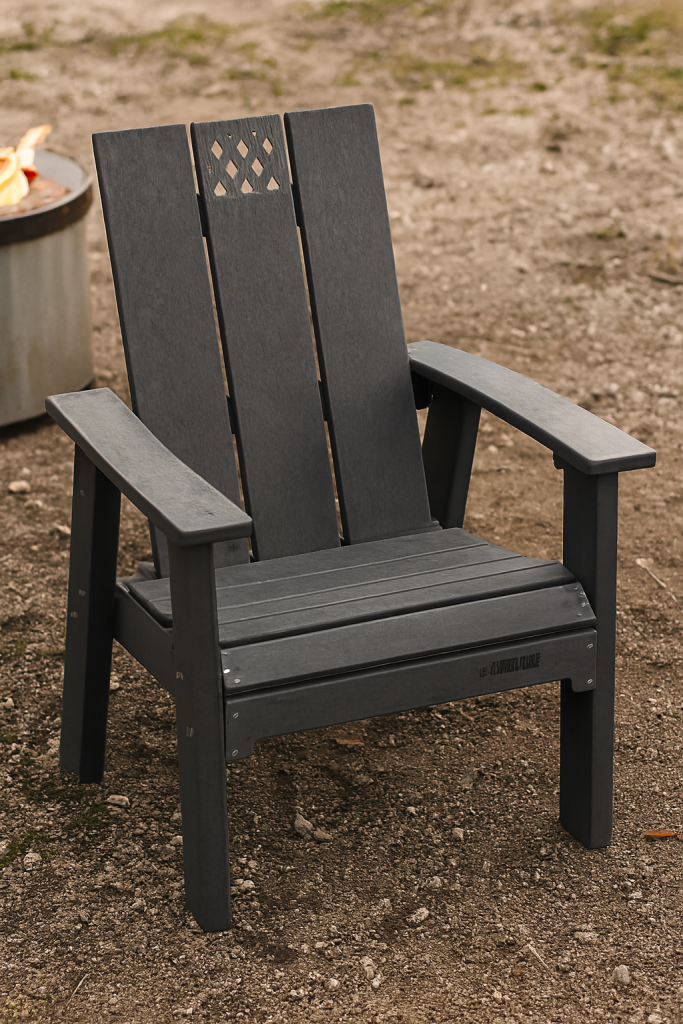
The OutRig Accessory System
Breeo makes modular accessories that attach to the X Series chairs. I bought one OutRig cupholder/tray ($69). This clips onto the chair arm and provides a secure spot for drinks and small items.
The OutRig uses a simple clamp system that grips the chair arm. It doesn’t damage the chair or require any permanent modification. Installation takes about 15 seconds. Removal takes 10 seconds.
The tray surface is 8 inches by 6 inches—big enough for a pint glass, a phone, and a small plate of snacks. The cupholder section securely holds standard cups, beer bottles, and wine glasses. I’ve never had anything tip over, even when reaching across to grab something.
Is it worth $69? That depends on how much you value not having to bend down to grab your drink from the ground. I use mine every time I’m outside, so for me, yes. But it’s definitely a luxury addition, not a necessity.
Breeo also makes an OutRig phone mount ($49) and an OutRig side table ($149). I haven’t purchased these, so I can’t review them. But the cupholder/tray quality suggests the other accessories are probably well-made.
Comfort for Different Body Types
I’m 6’1″ and 215 pounds. The chairs fit me perfectly. My wife is 5’4″ and weighs less than I do. The chairs work well for her too—she doesn’t feel like she’s sitting in a chair designed for someone bigger.
The key is that 18-inch seat depth. It’s a goldilocks measurement that works for a wide range of body sizes. Shorter people can sit with their backs fully against the backrest without their feet dangling. Taller people don’t feel like their knees are higher than their hips.
The arm height is 25 inches from the ground. This is comfortable for resting your arms whether you’re 5’4″ or 6’2″. The arms are also wide enough (4 inches) to actually rest your forearms on comfortably.
I’ve had probably 20 different people sit in these chairs over the past 8 months—ages ranging from 8 to 70, heights from 5’2″ to 6’4″, weights from 110 to 280 pounds. Every single person commented positively on the comfort. Several asked where I bought them.
Color Options and Aesthetics
The X Series comes in eight colors: Black, Gray, White, Antique Mahogany, Patriot Blue, Turf Green, Birchwood, Coastal Gray, and Brazilian Walnut.
I went with Black and Gray because I wanted a neutral look that wouldn’t clash with my existing patio setup. Both colors look sophisticated—not cheap or plasticky.
The surface finish has a subtle matte texture that resembles painted wood. From 10 feet away, these chairs don’t immediately read as plastic furniture. The stainless steel accents add visual interest and reinforce the quality appearance.
The wood-tone colors (Antique Mahogany, Brazilian Walnut, Birchwood) use color throughout the material rather than surface coating. This means scratches or chips won’t expose a different-colored core. The color is consistent all the way through the poly lumber.
If I were buying again, I might go with Coastal Gray or Birchwood. Both colors would hide dirt slightly better than solid black or white. But that’s a minor consideration—as I mentioned earlier, these chairs don’t accumulate dirt quickly anyway.
Real-World Use Cases: Where These Chairs Excel
Fire pit seating: This is the primary use case Breeo designed for, and it shows. The elevated position keeps you in the warmth zone around the fire without getting too close. You’re at the right height to reach s’more sticks into the flames without straining your back.
Outdoor dining: I’ve used these chairs for dinner parties on my patio. They work well at a standard dining table height (28-30 inches). The upright seating position makes eating comfortable.
Reading/relaxing: The 105-degree backrest angle is comfortable for reading. I spent several mornings over the summer reading in these chairs with coffee. No back strain, no need to constantly shift position.
Kids: My nephew (age 9) loves these chairs. He can get in and out easily, and the chairs are stable enough that he doesn’t tip them over when he climbs on them (kids do this—you know they do).
Where These Chairs Don’t Excel
Portability: At 37 pounds each, these aren’t chairs you’ll take camping or to the beach. They’re designed for permanent or semi-permanent placement. If you need portable seating, folding camp chairs are the better choice.
Storage: These chairs are bulky. They don’t stack, and they don’t fold. If you have limited patio space or need to store outdoor furniture during winter, the X Series might be problematic. I leave mine outside year-round.
Budget constraints: If you’re spending $399 per chair and you need 6-8 chairs, you’re looking at $2,400-3,200. That’s a significant investment. For that use case, mixing Breeo chairs with less expensive options might make sense.
Narrow spaces: The chairs are 28 inches wide. They need adequate space around them. On a small balcony or narrow patio, they might feel oversized.
Manufacturing Location and Company Background
Breeo manufactures the X Series chairs in Lancaster, Pennsylvania. This is verifiable—it’s printed on the product documentation and mentioned on their website.
The company started in 2011 focusing on smokeless fire pits. The X Series furniture line launched in 2022 as a complement to their fire pit products. The chairs were designed specifically to pair with Breeo’s fire pits, which explains the elevated seating position and fire pit-optimized geometry.
Manufacturing in the USA typically means higher labor costs, which partially explains the $399 price point. It also generally means better quality control and easier warranty service. Breeo’s customer service is based in Pennsylvania, not outsourced overseas.
I haven’t needed to contact customer service (nothing has gone wrong with the chairs), but I’ve read reviews from other customers who said Breeo’s support was responsive and helpful when they had questions.
Sustainability Considerations
The poly lumber is made from recycled HDPE plastic. According to Breeo’s specifications, each chair contains approximately 400-500 plastic milk jugs worth of recycled material.
This is legitimate recycling—they’re taking post-consumer plastic waste and converting it into a durable product with a 15-20 year lifespan. That’s significantly better for the environment than plastic ending up in landfills or, worse, oceans.
The alternative—wooden chairs—requires cutting down trees. Yes, trees are renewable, but old-growth or even second-growth lumber takes decades to replace. Harvesting, processing, and treating wood also has environmental costs.
The chairs are fully recyclable at end-of-life. When these chairs finally wear out in 15-20 years, the poly lumber can be reground and molded into new products. You’re not creating waste that will sit in a landfill for centuries.
From a sustainability perspective, these chairs are probably the most environmentally responsible option in their price category.
Final Assessment: Who Should Buy These Chairs
After 8 months of ownership, I’m completely satisfied with these chairs. They’ve exceeded my expectations for comfort, durability, and weather resistance.
Buy these chairs if:
- You have a permanent fire pit setup and want high-quality seating
- You want outdoor furniture that requires zero maintenance
- You’re willing to pay more upfront to avoid replacing cheap chairs every few years
- You value comfort for extended sitting sessions
- You want furniture that will last 15-20 years
Don’t buy these chairs if:
- You need portable seating for camping or events
- You’re on a tight budget and can’t justify $399 per chair
- You have limited storage space and need furniture that folds or stacks
- You prefer traditional low-slung Adirondack chair aesthetics
The bottom line: The Breeo X Series chair costs significantly more than alternatives, but it delivers proportional value through superior comfort, exceptional durability, and zero maintenance requirements. Over a 10-year ownership period, the cost-per-year is competitive with mid-range alternatives that require ongoing maintenance or replacement.
These chairs are designed for people who use outdoor seating regularly and want furniture that will last decades, not seasons. If that describes you, the X Series is worth the investment.
If you’re using outdoor seating occasionally and primarily care about initial cost, cheaper alternatives make more sense. There’s no shame in that—not everyone needs a $399 chair, and that’s fine.
For me, these chairs have become my favorite piece of outdoor furniture. I’ve spent probably 100+ hours sitting in them over 8 months, and they’ve made my fire pit area significantly more enjoyable. That’s worth $399 to me.
Technical Specifications Summary
Dimensions:
- Width: 28 inches
- Depth: 31 inches
- Height: 34 inches
- Seat height: 16 inches
- Seat depth: 18 inches
- Arm height: 25 inches
- Arm width: 4 inches
Weight and Capacity:
- Chair weight: 37 lbs
- Weight capacity: 400 lbs
Materials:
- Frame: Recycled HDPE poly lumber
- Accents: 304 stainless steel
- Hardware: Stainless steel screws
Warranty:
- Duration: 20 years limited
- Coverage: Material and workmanship defects, chipping, peeling, rotting, splintering, cracking
Colors Available: Black, Gray, White, Antique Mahogany, Patriot Blue, Turf Green, Birchwood, Coastal Gray, Brazilian Walnut
Assembly:
- Time required: 8-15 minutes
- Tools included: Yes (hex key)
- Pieces: 4 main components
Manufacturing:
- Location: Lancaster, Pennsylvania, USA
- Materials: Sustainable recycled content
- End-of-life: Fully recyclable
Price:
- Chair only: $399
- Chair + OutRig accessory bundle: $438
- Optional OutRig cupholder/tray: $69
